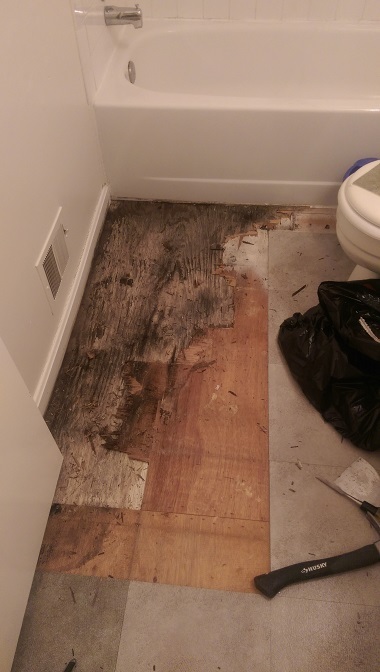How do you actually feel with regards to How to Prevent Bathroom Water Damage?

The restroom is very at risk for moist build-up and also prospective water damage due to the regular use water in it. This short article offers basic inspection techniques to aid detecting water damage dangers.
The constant use water in the washroom makes it exceptionally at risk for moist accumulation and prospective water damage. By examining it on a regular basis, you can lower water relevant problems.
The adhering to collection of inspections is easy to perform and should be done once in every 3 months in order to maintain your washroom healthy and also to stop possible water problems triggered by the tub, the shower, pipe joints as well as plumbing, sinks, cabinets, and the bathroom
Do not disregard doing these evaluations and also be detailed while executing them. Remember that these easy examinations can conserve you a lot of cash by giving very early indicators for water damage
Sinks and Cabinets
Sinks and cabinets are exposed to dampness as well as moisture daily and are frequently overlooked. Inspect regularly under the sink as well as on the counter top above it. Fix any type of drip in the trap as it may suggest drainpipe problems. Browse the sink, sluggish draining pipes may show a blocked drainpipe. Replace sink seals if they are broken or loose.
Bath tub and Shower
The shower and also bath tub need special interest and also maintenance. Examine the tiles and also change if split. Ensure that there is no missing out on grout in between the floor tiles. Examine and change broken caulking at joints where the wall surfaces fulfill the floor or the tub. Clogged drains pipes and pipes troubles will protect against the tub from drying out and might indicate severe issues beneath the bath tub. Speak with a specialist right away to stop structural damages. Focus on stainings or soft areas around the bath tub walls as they might suggest an inner leak.
Plumbing
Signs for water damages are hard to find because the majority of pipes are mounted inside the walls.
Pay unique focus to flooring and also walls wetness and stains as they may show an unnoticeable plumbing trouble. Check wetness degrees in adjacent areas as well.
The Commode
The toilet is a prone water junction. Check the water lines as well as search for leakages around the bathroom seat, in the hose, as well as under the water tank. If you discover any indications of dampness on the flooring around the bathroom, look for leaks in the toilet rim as well as container seals.
Understand that hanging bathroom dish deodorants enhances the chances for clogs.
Water Damage Signs In The Bathroom To Avoid Cleanup
Musty smell
This is one of the easiest signs to catch because musty smells are so odorous. The damp, earthy, moldy smell should be a big red flag. The smell will develop when moisture gets trapped in surfaces, and begins to facilitate mold growth. Leaking pipes under cabinets, inside walls, and behind shower fixtures will cause moisture to stay trapped and not dry, which will lead to mold growth and spread. As soon as you notice any musty smells in your bathroom, have it checked for hidden water damage and cleanup signs.
Visible mold
If the smell isn’t there to give it away, sometimes you will actually see mold growth. Finding mold in your bathroom is a serious problem, because mold is very harmful to your health. By the time mold growth is visible, it also means that water damage has already occurred and been present for some time. The only way the mold problem can be resolved is to find the source of the moisture and get it stopped. To safely and adequately remove mold, you need to have professionals handle the remediation. Do not waste any time in getting mold problems addressed, fixed, and sanitized so that you can protect you and your family from the many respiratory symptoms caused by mold exposure.
Damaged floors
Bathroom floors should be able to withstand some exposure to water while still remaining in good condition. However, when excess exposure or water leaks occur, they will begin to damage even the most water-resistant flooring. If you notice any cracking, bubbling, staining, or warping on your bathroom floors, there is probably a water leak somewhere causing the distortion. If you notice areas of the floor have become softer, or even have a spongy feeling, there is probably damage to the subfloor. Subflooring is typically made up of plywood. When plywood is exposed to water or moisture, it will absorb it. Once it has become saturated, the weight of the excess water will cause the wood to swell and soften. Check the floors in your bathroom frequently to catch any of these sings before they lead to damaged subflooring.
Changes on walls
When water leaks behind walls, it will cause changes in the drywall. Peeling plaster, blistering paint, and soggy wallpaper are all good indicators that excess water is building up behind the wall. Water leaking behind drywall will cause it to swell and be soft to the tough. If you start to notice gaps along the trim of your walls, or where tile meets the wall, it could also be a strong indicator that there is a leak behind the wall. Any changes, distortion, or damage on the walls should be evaluated as soon as you notice it to prevent further water damage and cleanup.

We were made aware of that report about How to Repair and Prevent Bathroom Water Damage through a friend on our other web property. Be sure to set aside a second to share this blog posting if you enjoyed it. Thanks a lot for taking the time to read it.
Go Deal